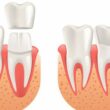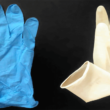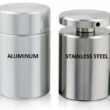Difference Between Theropods And Sauropods
The saurischians are divided into two distinct subgroups—the meat-eating, upright theropods, and the predominantly plant-eating sauropods, which walked on all fours.
Theropods
The theropods (“beast feet”) had a large (sometimes disproportionately large) head with strong jaws and huge, sharp teeth. Their small front legs were equipped with sharp, curved claws for grasping prey. They walked on large, strong rear legs, typically leaning forward, their long tails providing a stabilizing counterbalance. The hind legs had large feet with three or more toes. These creatures could not walk on four legs.
The smallest theropod was Compsognathus, which appeared during the Triassic period at the beginning of the Mesozoic era. The largest theropods developed during the Cretaceous period at the end of the Mesozoic era, and included Tyrannosaurus rex, which appeared in North America and grew to a height of 20 feet (6 meters) and a length of 50 feet (15 meters).
Another large theropod was the Gorgosaurus, which grew to 40 feet (12 meters) in length. This enormous creature had a huge head and jaw and powerful rear legs.
In the mid-1990s, fossils of yet another massive carnivorous dinosaur were discovered in Argentina. Named Gigantosaurus carolinii, this beast was nearly 42 feet (12.8 meters) long and weighed about 9 tons. A similar theropod, Allosaurus, developed in North America during the Jurassic period, midway through the Mesozoic era. It grew to a length of nearly 33 feet (10 meters). In Africa, paleontologists led by Paul Sereno of the University of Chicago recently discovered remains of a 30-foot (9-meter)-long theropod that also closely resembled the Allosaurus. They named it Afrovenator, or “African hunter.” The presence of three similar dinosaurs—Gigantosaurus, Allosaurus, and Afrovenator—clearly related to a single ancestor, discovered on three separate continents—South America, North America, and Africa—is cited by geologists as evidence that these landmasses were once joined together.
Other theropods include Struthiomimus—nicknamed “ostrich” dinosaur for the way in which its toothless jaws are set in a birdlike beak, and Velociraptor, a fast-moving predator made famous by the movie Jurassic Park.
Sauropods
The sauropods (“lizard feet”) had four legs of approximately equal size. These creatures walked on all fours and, although generally considered to have been herbivorous, some may have eaten meat as well.
The sauropods were some of the largest animals that ever lived; indeed, even the smallest sauropods grew to be larger than modern-day elephants. The first sauropod was probably a large dinosaur called Plateosaurus. Other sauropods included Apatosaurus (formerly known as Brontosaurus), which may have weighed as much as 40 tons, and its relative, Diplodocus, which weighed about 15 tons but grew to a length of 85 feet (26 meters). Both of these creatures had the typical sauropod body structure: a slender head at the end of a long neck; a stout, elephant-like body supported by sturdy legs; and a long, tapering tail. Because these animals were so huge and had such long necks, scientists once thought they must have lived completely or at least partially in an aquatic environment, depending on the water for buoyancy and using their long necks to keep their heads above the surface for breathing and eating. Recent studies have shown that their legs could have supported their great bulk, and their long necks helped them reach tall plant life. Still, they must have been slow beasts that made relatively easy prey for the theropods.
Other sauropods include Brachiosaurus, an East African dinosaur that stood 60 feet (18 meters) tall and weighed 70 tons or more, and Argentinosaurus, which, at about 100 tons, was until 1996 considered the largest animal ever to have lived. That year, however, fossils from an even larger dinosaur—aptly named Supersaurus—were found. Originally thought to be the remains of two dinosaurs (the other dubbed Ultrasaurus), the fossils indicate that Supersaurus was at least 134 feet (40 meters) long and weighed well over 100 tons.



